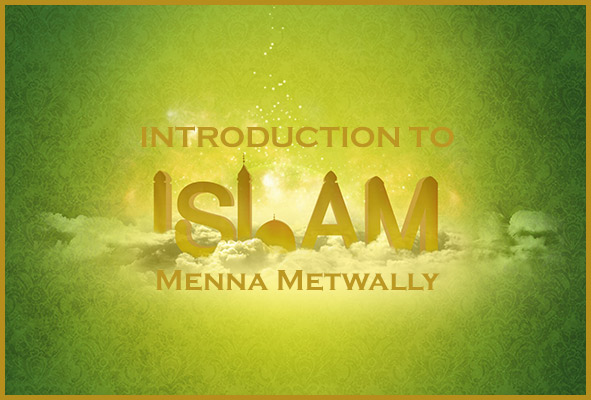Hub For Your Daily Islamic Insights 🕋 🕌

Introduction to Islam, A comprehensive guide by Menna Metwally
A comprehensive guide by Menna Metwally
Free
Discover the perfect introduction to the Islamic faith with this beautifully crafted resource, 'Introduction to Islam' by Menna Metwally. Designed to captivate learners of all ages and backgrounds, this educational tool features eye-catching, full-color graphics and easy-to-understand text that makes complex concepts simple and approachable. Ideal for classrooms, home study, or community groups, the resource comes in a convenient A4 size, making it easy to display, share, or store. Whether you’re a teacher, student, or curious learner, 'Introduction to Islam' provides a balanced and visually engaging way to explore core beliefs, cultural insights, and historical context. Enhance your learning experience with this essential and thoughtfully designed guide today.
### Introduction to Islam: A Comprehensive Guide by Menna Metwally Islam, one of the world’s major religions, boasts a rich tapestry of beliefs, practices, and cultural nuances. Founded in the 7th century in the Arabian Peninsula, it has evolved into a faith followed by more than a billion people worldwide. This guide aims to provide an insightful overview of Islam, emphasizing its core tenets, historical development, and its role in contemporary society. #### Historical Context The inception of Islam traces back to the Prophet Muhammad, who is regarded as the final messenger in a long line of prophets that includes figures like Abraham, Moses, and Jesus. Born in Mecca around 570 CE, Muhammad's life was marked by spiritual reflections and encounters that culminated in the revelation of the Quran, Islam’s holy book, through Angel Gabriel. The early years of Islam were characterized by social upheaval, as the new religion challenged existing norms and hierarchies. Despite facing significant persecution, Muhammad's teachings spread rapidly, leading to a substantial following. His death in 632 CE marked the beginning of a new era, with the establishment of Islamic governance and the expansion of the faith across the Middle East and beyond. #### Core Beliefs At the heart of Islam are the **Five Pillars**, which serve as foundational acts of worship and principles that every Muslim strives to uphold: 1. **Shahada (Faith)**: The declaration of faith stating, "There is no god but Allah, and Muhammad is His messenger." 2. **Salah (Prayer)**: Performing ritual prayers five times a day facing Mecca, which reinforces a direct connection to God. 3. **Zakat (Almsgiving)**: The act of giving to those in need, emphasizing social responsibility and support for the less fortunate. 4. **Sawm (Fasting)**: Observing fasting during the month of Ramadan, which promotes self-discipline, spirituality, and community bonding. 5. **Hajj (Pilgrimage)**: Undertaking a pilgrimage to Mecca at least once in a lifetime, if financially and physically able, which reinforces unity among Muslims. These pillars encapsulate the essence of a Muslim’s faith and practices, guiding them in their personal and communal lives. #### The Quran and Hadith The **Quran** is considered the literal word of God, providing guidance on various aspects of life, from ethics to personal conduct. Muslims regard it as the ultimate source of authority and wisdom. Additionally, the **Hadith**, which are collections of sayings and actions of Prophet Muhammad, serve as important supplementary texts that provide context and elaboration on Quranic verses and help shape Islamic law and morality. #### Diversity Within Islam While the core beliefs of Islam remain consistent, the religion is not monolithic. There are several branches, the most prominent of which are: - **Sunni Islam**: Representing about 85-90% of Muslims, Sunnis adhere to the traditions and practices established by the Prophet and his companions, following a democratic system of leadership. - **Shia Islam**: Accountable for a smaller portion of the Muslim population, Shia Muslims hold that leadership should remain within the Prophet’s family, particularly through his cousin and son-in-law, Ali. In addition to these main branches, there are numerous cultures, schools of thought, and sects, each adding layers of richness to the Islamic tradition. #### Islam Today In the 21st century, Islam faces a multitude of challenges and opportunities. Globalization, interfaith dialogue, and the proliferation of technology have transformed how Muslims interact with one another and with society at large. Islamophobia and misconceptions about the faith highlight the need for education and understanding to combat prejudice and promote coexistence. Many Muslims actively engage in bettering their communities, working towards social justice, charity, and environmental stewardship, reflecting the core values of Islam. Additionally, the rise of social media allows for a diverse array of voices within Islam to emerge, facilitating discussions about reform, interpretation, and practice. #### Conclusion Understanding Islam requires delving into its foundational beliefs, historical evolution, and the varying experiences of its adherents. This comprehensive guide serves as an entry point for anyone seeking to learn more about this vibrant and complex faith. As we embrace the dialogues about religion in our increasingly interconnected world, it is vital to approach Islam with an open heart and a willingness to learn, forging connections that bridge cultural and religious divides. By doing so, we honor the essence of Islam – a faith rooted in peace, community, and compassion.
